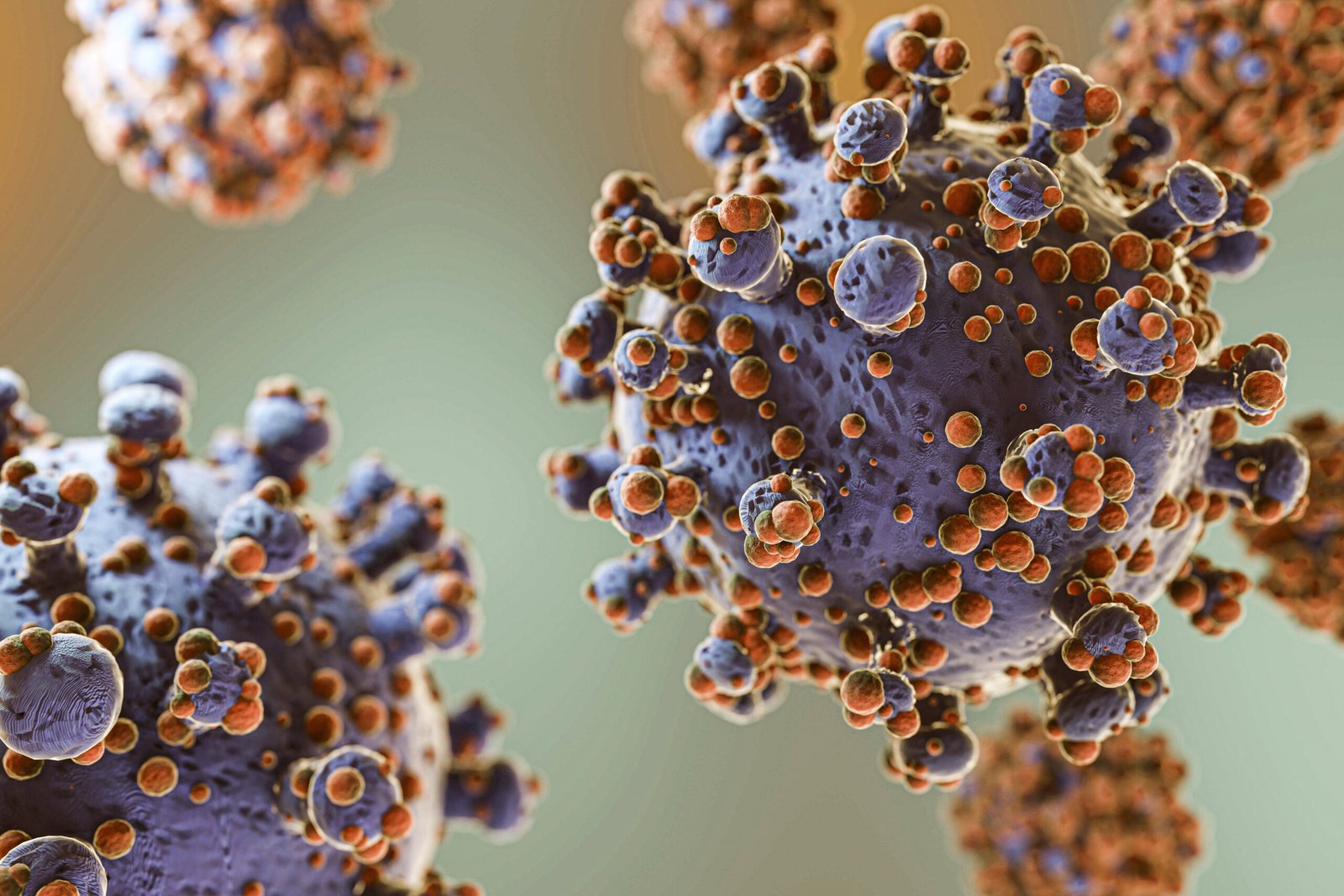Infectious Diseases: A Comprehensive Guide
Table of Contents
Introduction
Infectious diseases have been a scourge on humanity since time immemorial, shaping the course of civilizations and leaving indelible marks on human history. From the bubonic plague that ravaged medieval Europe to the Spanish flu pandemic that swept the globe in the early 20th century, these diseases have had profound effects on societies, economies, and individuals. Today, despite advances in medicine and public health, infectious diseases remain a significant global health challenge, with new threats constantly emerging.
The concept of infectious diseases is broad, encompassing a wide range of illnesses caused by pathogenic microorganisms such as bacteria, viruses, parasites, and fungi. These diseases can be transmitted through various means, including direct contact with an infected person, exposure to contaminated food or water, or bites from infected insects. The symptoms of infectious diseases can vary widely, ranging from mild flu-like symptoms to severe, life-threatening conditions.
Understanding the historical context of infectious diseases is crucial for appreciating the impact they have had on human societies. Throughout history, infectious diseases have been responsible for some of the most devastating pandemics, leading to millions of deaths and reshaping entire populations. The development of vaccines and antibiotics in the 20th century represented major milestones in the fight against infectious diseases, significantly reducing mortality rates and improving overall public health.
Despite these advances, infectious diseases continue to pose significant challenges, particularly in developing countries where access to healthcare and sanitation is limited. The World Health Organization (WHO) estimates that infectious diseases are responsible for millions of deaths each year, with children and the elderly being particularly vulnerable.
In this guide, we will explore the complexities of infectious diseases, including their types, historical context, prevalence, demographic data, symptoms, treatment options, and prevention strategies. By gaining a deeper understanding of these diseases, we can better appreciate the importance of ongoing efforts to prevent, control, and treat infectious diseases, ultimately leading to a healthier and more resilient global population.
Concept of Infectious Diseases
The concept of infectious diseases revolves around the understanding that these illnesses are caused by pathogenic microorganisms that can be transmitted from one individual to another. These microorganisms, which include bacteria, viruses, parasites, and fungi, invade the body and disrupt its normal functioning, leading to illness and disease.
The transmission of infectious diseases can occur through various routes, including direct contact with an infected person, exposure to contaminated surfaces or objects, or through the bites of vectors such as mosquitoes or ticks. Some infectious diseases can also be transmitted through the air via respiratory droplets, making them highly contagious.
One of the key aspects of infectious diseases is their ability to spread rapidly within populations, particularly in settings where people live in close proximity to one another. This rapid spread can lead to outbreaks and epidemics, as seen with diseases like influenza and COVID-19.
Understanding the concept of infectious diseases is essential for implementing effective prevention and control measures. Vaccination, good hygiene practices, and public health interventions such as quarantine and isolation are all critical tools in the fight against infectious diseases. By understanding how these diseases are transmitted and how they can be prevented, we can reduce their impact on individuals and communities.
Variations of Infectious Diseases
Variations of infectious diseases encompass a wide range of illnesses caused by different types of pathogens, each with its own characteristics and modes of transmission. These variations include:
- Bacterial Infections: Bacterial infections are caused by bacteria and can affect various parts of the body, leading to illnesses such as tuberculosis, pneumonia, and urinary tract infections. These infections are often treated with antibiotics.
- Viral Infections: Viral infections are caused by viruses and can range from mild illnesses like the common cold to more severe diseases such as influenza, HIV/AIDS, and COVID-19. Vaccines and antiviral medications are used to prevent and treat viral infections.
- Parasitic Infections: Parasitic infections are caused by parasites and can be transmitted through contaminated food or water, insect bites, or contact with infected animals. Malaria, giardiasis, and toxoplasmosis are examples of parasitic infections.
- Fungal Infections: Fungal infections are caused by fungi and can affect the skin, nails, and internal organs. Examples include candidiasis and aspergillosis, which can be treated with antifungal medications.
- Vector-Borne Diseases: Vector-borne diseases are transmitted to humans through the bites of infected vectors such as mosquitoes, ticks, and flies. Examples include malaria, dengue fever, and Lyme disease.
- Waterborne Diseases: Waterborne diseases are caused by pathogens that contaminate water sources, leading to illnesses such as cholera, typhoid fever, and hepatitis A.
- Zoonotic Diseases: Zoonotic diseases are infections that can be transmitted from animals to humans. Examples include rabies, Ebola virus disease, and COVID-19, which is believed to have originated from animals.
Each type of infectious disease presents unique challenges in terms of prevention, diagnosis, and treatment. Understanding these variations is essential for implementing effective control measures and reducing the burden of infectious diseases on global health.
Historical Context of Infectious Diseases
The historical context of infectious diseases is a rich tapestry of events that have shaped human civilization. Infectious diseases have been a constant companion throughout human history, often shaping the course of societies and influencing cultural practices.
Ancient civilizations were no strangers to infectious diseases. Epidemics and pandemics were not uncommon, with diseases like smallpox, tuberculosis, and plague affecting populations across the globe. The Plague of Athens in 430 BC, for example, is believed to have been typhoid fever or a similar infectious disease that devastated the Athenian population during the Peloponnesian War.
The Justinian Plague, which occurred in the 6th century AD, was one of the first recorded pandemics and is estimated to have killed millions of people across Europe, Asia, and Africa. This pandemic had far-reaching effects on the Byzantine Empire, leading to economic decline and social upheaval.
The Black Death, caused by the bacterium Yersinia pestis, swept through Europe in the 14th century, killing an estimated 75-200 million people. This pandemic, one of the deadliest in human history, had profound effects on European society, leading to labor shortages, economic turmoil, and social unrest.
In more recent history, infectious diseases have continued to pose significant challenges. The Spanish flu pandemic of 1918-1919, caused by the H1N1 influenza virus, infected an estimated 500 million people worldwide and killed between 50-100 million people, making it one of the deadliest pandemics in history.
The development of vaccines and antibiotics in the 20th century represented major milestones in the fight against infectious diseases. Vaccines have helped to eradicate diseases like smallpox and significantly reduce the burden of others, while antibiotics have revolutionized the treatment of bacterial infections.
Despite these advances, infectious diseases continue to pose challenges, with new pathogens emerging and old ones reemerging. The COVID-19 pandemic, caused by the novel coronavirus SARS-CoV-2, is a stark reminder of the ongoing threat posed by infectious diseases and the importance of global cooperation in addressing them.
In conclusion, the historical context of infectious diseases provides valuable insights into the impact these diseases have had on human societies and the importance of ongoing efforts to prevent, control, and treat them. By learning from the past, we can better prepare for the future and ensure that infectious diseases remain a manageable threat to global health.
Incidence and Demographic Data
Incidence and demographic data related to infectious diseases are crucial for understanding the burden of these diseases on populations worldwide. Incidence refers to the number of new cases of a disease that occur within a specified period, usually expressed as a rate per 100,000 people. Demographic data provides information about the characteristics of the affected population, such as age, gender, and geographical location.
The incidence of infectious diseases can vary widely depending on factors such as geographical location, population density, and access to healthcare. Developing countries often bear a disproportionate burden of infectious diseases, due to factors such as poor sanitation, inadequate healthcare infrastructure, and limited access to vaccines and treatments.
Demographic data can provide insights into which populations are most affected by infectious diseases. For example, children and the elderly are often more vulnerable to infectious diseases due to weaker immune systems. Gender can also play a role, with certain diseases affecting men and women differently.
In addition to age and gender, demographic data can also provide information about the geographical distribution of infectious diseases. Some diseases may be more prevalent in certain regions due to environmental factors, such as vector-borne diseases that are more common in tropical climates.
Overall, incidence and demographic data are essential for identifying trends in infectious diseases, developing targeted interventions, and monitoring the effectiveness of public health strategies. By understanding the burden of these diseases on different populations, health authorities can prioritize resources and efforts to reduce the impact of infectious diseases on global health.
Symptoms of Infectious Diseases
Symptoms of infectious diseases can vary widely depending on the type of pathogen involved and the part of the body affected. However, there are some common symptoms that may indicate an infectious disease. These include:
- Fever: A fever is a common symptom of many infectious diseases and is often the body’s response to an infection.
- Fatigue: Fatigue, or feeling unusually tired or weak, can occur with many infectious diseases as the body’s immune system works to fight off the infection.
- Cough: A cough is a common symptom of respiratory infections such as the common cold, flu, or pneumonia.
- Diarrhea: Diarrhea is a common symptom of gastrointestinal infections caused by bacteria, viruses, or parasites.
- Nausea and vomiting: Nausea and vomiting can occur with many infectious diseases, particularly those affecting the gastrointestinal tract.
- Muscle aches: Muscle aches, or myalgia, can occur with many infectious diseases, particularly those that cause inflammation in the body.
- Rash: A rash is a common symptom of many infectious diseases, particularly those that affect the skin, such as chickenpox or measles.
- Headache: Headaches are a common symptom of many infectious diseases, particularly those that cause inflammation in the body.
- Swollen lymph nodes: Swollen lymph nodes, or lymphadenopathy, can occur with many infectious diseases as the body’s immune system responds to the infection.
- Difficulty breathing: Difficulty breathing, or dyspnea, can occur with respiratory infections such as pneumonia or COVID-19.
It is important to note that these symptoms can also be caused by other conditions, so it is essential to consult a healthcare professional for an accurate diagnosis and appropriate treatment.
Treatment of Infectious Diseases
Treatment of infectious diseases depends on the specific pathogen causing the illness and the severity of the infection. However, there are several general approaches to treating infectious diseases:
- Antibiotics: Antibiotics are used to treat bacterial infections. They work by killing or inhibiting the growth of bacteria. It is important to use antibiotics only when necessary and as prescribed by a healthcare professional to avoid antibiotic resistance.
- Antiviral medications: Antiviral medications are used to treat viral infections. They work by inhibiting the replication of viruses in the body. Antiviral medications are available for certain viral infections such as influenza, HIV, and herpes.
- Antifungal medications: Antifungal medications are used to treat fungal infections. They work by killing or inhibiting the growth of fungi. Antifungal medications are available in various forms, including creams, ointments, and oral medications.
- Antiparasitic medications: Antiparasitic medications are used to treat parasitic infections. They work by killing or inhibiting the growth of parasites. Antiparasitic medications are available for a variety of parasitic infections, including malaria, giardiasis, and lice.
- Supportive care: Supportive care is often used to treat infectious diseases by managing symptoms and supporting the body’s natural defenses. This can include measures such as rest, hydration, and pain relief.
- Vaccination: Vaccination is a key strategy for preventing infectious diseases. Vaccines work by stimulating the immune system to produce antibodies against specific pathogens, providing immunity against future infections.
- Prevention of complications: In some cases, infectious diseases can lead to complications such as organ failure or sepsis. Treatment may focus on preventing or managing these complications.
It is important to consult a healthcare professional for an accurate diagnosis and appropriate treatment for infectious diseases. Self-medication and misuse of antibiotics can lead to antibiotic resistance and other health complications.
Prevention of Infectious Diseases
Prevention of infectious diseases is key to reducing their impact on individuals and communities. Several strategies can help prevent the spread of infectious diseases:
- Vaccination: Vaccination is one of the most effective ways to prevent infectious diseases. Vaccines stimulate the immune system to produce antibodies, providing immunity against specific pathogens. Routine vaccination schedules are recommended by healthcare authorities to protect against diseases such as measles, polio, and influenza.
- Hand hygiene: Proper hand hygiene, including washing hands with soap and water or using hand sanitizer, can help prevent the spread of infectious diseases. Hands should be washed before eating, after using the bathroom, and after coughing or sneezing.
- Respiratory hygiene: Covering coughs and sneezes with a tissue or the elbow can help prevent the spread of respiratory infections such as the common cold, flu, and COVID-19. Used tissues should be disposed of properly.
- Safe food practices: Practicing safe food handling and preparation can help prevent foodborne illnesses. This includes washing hands and surfaces often, separating raw meat from other foods, cooking food to the right temperature, and refrigerating food promptly.
- Avoiding close contact: Avoiding close contact with people who are sick can help prevent the spread of infectious diseases. This includes staying home when sick and avoiding large gatherings during outbreaks.
- Environmental hygiene: Keeping living and workspaces clean and hygienic can help prevent the spread of infectious diseases. This includes cleaning surfaces regularly and ensuring proper ventilation.
- Safe water and sanitation: Access to safe water and sanitation is essential for preventing the spread of infectious diseases. This includes ensuring access to clean drinking water, proper disposal of waste, and adequate sanitation facilities.
- Vector control: Vector-borne diseases such as malaria and dengue fever can be prevented by controlling the insects that transmit the diseases, such as mosquitoes. This can be done through measures such as insecticide-treated bed nets and insect control measures.
By implementing these preventive measures, individuals and communities can reduce the risk of infectious diseases and contribute to better overall health and well-being.
Conclusion
Infectious diseases have been a significant challenge throughout human history, shaping societies and influencing the course of events. From ancient plagues to modern pandemics, these diseases have had profound effects on individuals and communities. Despite advances in medicine and public health, infectious diseases continue to pose a threat to global health security.
Understanding the complexities of infectious diseases, including their types, historical context, prevalence, demographic data, symptoms, treatment options, and prevention strategies, is essential for effectively addressing these challenges. Vaccination, good hygiene practices, and public health interventions play a crucial role in preventing the spread of infectious diseases and reducing their impact on society.
It is important to remember that while this guide provides valuable information about infectious diseases, it is not a substitute for professional medical advice. If you are experiencing symptoms of an infectious disease or have concerns about your health, it is important to seek medical attention from a healthcare professional. By working together and taking proactive measures, we can protect ourselves and our communities from the threat of infectious diseases.
See more in The 10 Most Common Diseases Affecting Humans Worldwide




